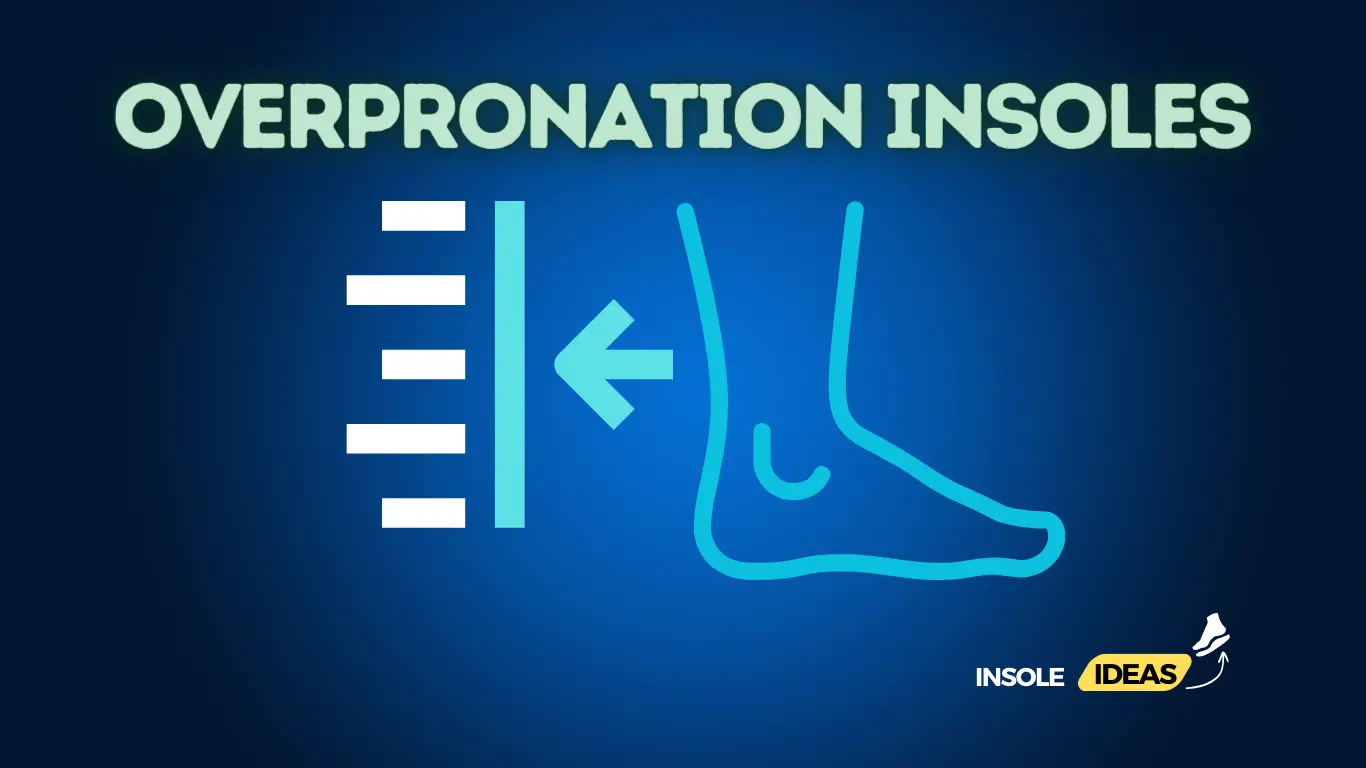Overpronation Insoles
Explanation of Overpronation
Overpronation is a common foot condition characterized by excessive inward foot rolling during walking or running. Usually, the foot rolls slightly inward to absorb shock, but in overpronation, this inward rolling motion is exaggerated, leading to misalignment of the foot and ankle joints. Over time, overpronation can contribute to various foot problems, such as plantar fasciitis, shin splints, and knee pain.
Impact of Overpronation on Foot Health
Overpronation can have a significant impact on foot health and overall biomechanics. When the foot excessively rolls inward, it places excessive strain on the ligaments, tendons, and muscles of the foot and lower leg. This can lead to various issues, including arch collapse, instability, and increased risk of injury. Overpronation may also disrupt the body’s natural alignment, causing pain and discomfort in the feet, ankles, knees, hips, and lower back.
Understanding Insoles for Overpronation
Role of Insoles in Addressing Overpronation
Insoles designed for overpronation are crucial in supporting and stabilizing the foot arches, controlling excessive inward rolling motion, and promoting proper foot alignment. By redistributing pressure and providing cushioning to essential areas of the foot, these insoles help alleviate discomfort and reduce the risk of injury associated with overpronation. Additionally, they can improve overall foot function and enhance performance during physical activities.
Benefits of Using Insoles for Overpronation
Using insoles designed explicitly for overpronation offers several benefits. Firstly, they provide targeted support to the arches, helping to prevent arch collapse and maintain proper foot alignment. Secondly, they offer cushioning and shock absorption, reducing stress on the feet and lower limbs during walking, running, or standing for long periods. Moreover, overpronation insoles can help alleviate pain and discomfort associated with overpronation, allowing individuals to move more comfortably and efficiently. Overall, using insoles for overpronation can contribute to improved foot health, enhanced biomechanics, and reduced risk of injury.
Features to Look for in Overpronation Insoles
Arch Support
Arch support is one of the key features to consider when choosing insoles for overpronation. Proper arch support helps maintain the natural curvature of the foot arches, preventing excessive flattening and inward rolling. Look for insoles with firm arch support that match the contours of your foot, providing stability and alignment throughout the gait cycle. Arch support helps distribute pressure evenly across the foot, reducing strain on the ligaments and muscles and promoting a more efficient and comfortable walking or running motion.
Cushioning
Cushioning is another essential feature to look for in overpronation insoles. Cushioned insoles help absorb shock and impact forces generated during walking or running, reducing stress on the feet and lower limbs. Look for insoles with ample cushioning in the heel and forefoot areas to provide maximum comfort and protection. However, it’s essential to strike a balance between cushioning and support, as excessive cushioning without adequate support can exacerbate overpronation and lead to further biomechanical issues.
Stability Features
Stability features are designed to control excessive motion and provide support to the foot and ankle joints. Look for insoles with stability features such as a deep heel cup, medial arch support, and a firm heel counter. These features help stabilize the foot and prevent it from rolling excessively inward, reducing the risk of overpronation-related injuries. Additionally, stability features help improve overall foot alignment and biomechanics, promoting a more natural and efficient gait pattern.
Types of Overpronation Insoles
Custom Orthotic Insoles
Custom orthotic insoles are designed to address the unique biomechanical needs of individuals with overpronation. These insoles are custom-made based on a detailed assessment of the individual’s foot structure, gait pattern, and specific needs. Custom orthotic insoles offer personalized support and correction, effectively controlling overpronation and reducing associated symptoms.
Prefabricated Insoles
Prefabricated insoles, also known as off-the-shelf insoles, are pre-made insoles available in various sizes and arch configurations. While they may not offer the same level of customization as custom orthotic insoles, prefabricated insoles still provide adequate support and cushioning for individuals with overpronation. They are more affordable and readily available, making them convenient for those seeking immediate relief from overpronation symptoms.
Motion Control Insoles
Motion control insoles stabilize the foot and control excessive motion during walking or running. These insoles typically feature rigid materials and additional support structures to limit pronation and promote proper foot alignment. Motion control insoles are ideal for individuals with severe overpronation or those engaging in high-impact activities that require extra support and stability. When choosing motion control insoles, it’s essential to consider the level of support and rigidity needed based on individual foot mechanics and activity level.
How to Choose the Right Overpronation Insoles
Foot Analysis and Gait Assessment
Before choosing overpronation insoles, it’s crucial to undergo a thorough foot analysis and gait assessment. A podiatrist or footwear specialist can assess your foot structure, arch type, and gait pattern to determine the most suitable insole options. This personalized approach ensures that the insoles address your needs and provide optimal support and correction for overpronation.
Shoe Compatibility
Consider the compatibility of the insoles with your footwear. Some insoles may be designed for specific shoes, such as athletic shoes, dress shoes, or work boots. Choose insoles that fit comfortably inside your shoes without causing crowding or discomfort. Additionally, consider the thickness and profile of the insoles to ensure they fit well and do not alter the fit of your shoes.
Comfort and Fit
Finally, prioritize comfort and fit when choosing overpronation insoles. Look for insoles that feel comfortable and supportive underfoot, with adequate cushioning and arch support. Test the insoles in shoes and walking or running environments to meet your comfort and performance needs. Additionally, pay attention to any areas of discomfort or pressure points and adjust the insoles accordingly for a customized fit.
Using Overpronation Insoles Effectively
Gradual Adaptation
When using overpronation insoles, it’s essential to allow for a gradual adaptation period. Your feet may need time to adjust to the new support and alignment provided by the insoles. Begin by wearing the insoles for short periods each day, gradually increasing the duration as your feet become accustomed to the changes. Pay attention to any discomfort or soreness during the adaptation period, and adjust the wearing schedule accordingly. It’s normal to experience some initial discomfort, but persistent pain or discomfort may indicate improper fit or alignment and should be addressed promptly.
Proper Placement and Adjustment
Proper placement and adjustment of overpronation insoles are crucial for maximizing their effectiveness. Ensure that the insoles fit snugly inside your shoes without causing bunching or slipping. Position the insoles so that the arch support aligns with the natural arches of your feet, providing adequate support and stability. You may need to trim the insoles to fit your shoes properly or adjust the placement to accommodate any areas of discomfort or pressure. Regularly check the fit and placement of the insoles to ensure they remain in the correct position and provide consistent support throughout the day.
Maintenance and Care Tips
Maintaining and caring for overpronation insoles is essential for prolonging their lifespan and effectiveness. Regularly clean the insoles with mild soap and water to remove dirt, sweat, and odor buildup. Allow the insoles to air dry thoroughly before returning them to your shoes. Avoid exposing the insoles to excessive heat or direct sunlight, as this can cause warping or damage to the materials. If the insoles become worn or lose shape over time, consider replacing them to maintain optimal support and comfort. Additionally, store the insoles in a cool, dry place when not in use to prevent mold or mildew growth.
Conclusion
Recap of the Importance of Overpronation Insoles
In conclusion, overpronation insoles are crucial in addressing biomechanical issues associated with overpronation, providing support, stability, and alignment to the feet. By controlling excessive motion and redistributing pressure, these insoles help alleviate discomfort, reduce the risk of injury, and improve overall foot function. Incorporating overpronation insoles into your footwear can significantly enhance your comfort and performance during daily activities and physical exercise.
Encouragement to Seek Professional Guidance if Needed
If you experience persistent foot pain, discomfort, or difficulty with overpronation insoles, it’s essential to seek professional guidance from a podiatrist or footwear specialist. They can assess your foot mechanics, evaluate the effectiveness of your current insoles, and recommend appropriate adjustments or alternative treatment options. Remember that each individual’s foot anatomy and biomechanics are unique, and personalized care and guidance are vital to addressing overpronation effectively. Don’t hesitate to seek professional assistance to ensure optimal foot health and function.





